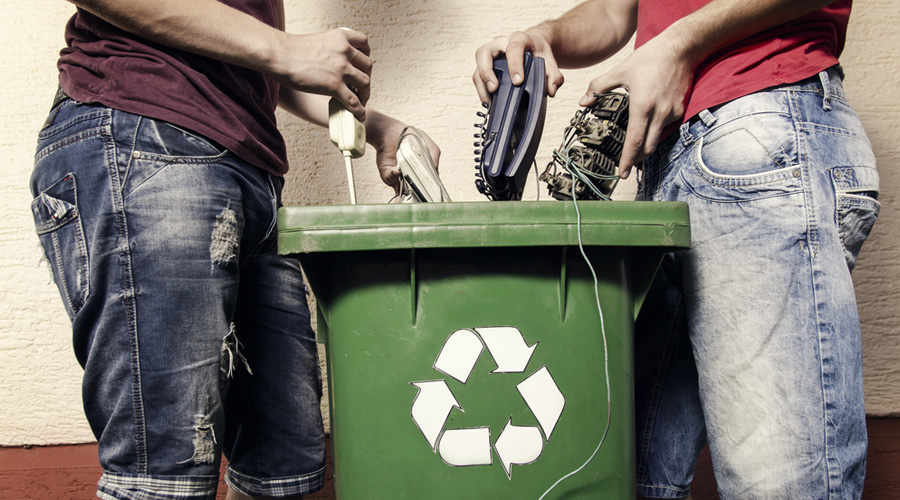Waste disposal has received a lot of attention but the diseases associated with it are not always highlighted. Globally, around 5.2 million people die every year because of diseases caused by medical waste. India usually generates 62 million tonnes of municipal solid waste annually, which is expected to increase to 165 million tonnes by 2030.
During the Covid period, management of waste was not a priority. However, there has been a lot of improvement regarding waste disposal in the past two decades, though much remains to be done.
People are generally worried about family health and spend a lot of time worrying about the content and quality of cooking oil or salt based on advertisements. However, very few go to the market searching for blue or green bins for segregation of domestic waste.
Today, waste management is an organised sector and it cannot be ignored. Disposal of waste affects every individual and the associated diseases are a burden on society.
Love Canal
The Love Canal tragedy exposed the dangerous health hazards of improper waste disposal in 1978. In Love Canal, a city near Niagara Falls, United States, the common people discovered that they were sitting next to 20,000 tonnes of waste. Around 200 different chemical compounds, including at least 12 carcinogens (agents causing cancer) were present.
In 1892, William T. Love tried to connect the upper and lower Niagara river by digging a canal six to seven miles long and create a man-made waterfall to provide cheap power. The project was later abandoned and the canal used as a dumping ground unknown to the present residents.
During the agitation, miscarriages increased by 300 per cent and there were three times more birth defects. In 1979, only four normal babies were born in 22 pregnancies. There was a 300 per cent increase in urinary tract disorders. The agitation of the common people forced the then US President to relocate the residents.
Some of the landmark conclusions of the Love Canal tragedy included
- Waste-related activism by common people could deliver environmental justice.
- Proper disposal of waste is important in protecting public health.
- Education and awareness of residents are mandatory.
- Politics, public pressure and economic issues took precedence over scientific evidence.
Domestic waste
Domestic waste is generated from household activities like cooking, cleaning, packaging or using plastic carry bags. The National Green Tribunal has ordered that waste has to be adequately segregated and managed.
Green bins are used for biodegradable items like food, vegetables and fruit waste. Blue bins are used for non-biodegradable items like paper, glass, metal or wood. Every household and housing complex should segregate waste in blue and green bins.
Collection of these bins regularly from the 144 wards of Kolkata requires a large number of personnel and a huge amount of money. The municipal workers may develop eye problems, chronic cough, diarrhoea or skin infections.
Inadequate disposal of domestic waste can be associated with infective diseases like malaria, dengue, viral fever or Japanese encephalitis. Intestinal infections like giardiasis are common. Residents staying close to landfill sites may suffer from malnutrition and tuberculosis. In some cases, life expectancy may be reduced.
Although every person has the right to a pollution-free environment, many people are ignorant about the diseases and problems associated with domestic waste. Segregation of domestic waste is crucial. It is also important to reduce the amount of waste generated daily.
This can be done by
- Reduction in consumption
- Recycling old items
- Reuse items as feasible
- Every person must take interest in domestic waste disposal for their own benefit to reduce associated diseases. Wearing masks and gloves and sanitising hands are recommended.
Hospital waste
Hospital waste disposal is guided by the Biomedical Waste Management Rules (2016) amended in 2018. About 80 per cent of hospital waste is non-hazardous, 15 per cent is infectious and five per cent is non-infectious but hazardous.
According to an estimate, 2.5 to 3kg of bio-waste is generated per bed per day. Many corporate hospitals today have 400 to 500 beds.
Hospital waste is dangerous for the medical fraternity, patients and relatives as it is a potential source of pathogenic microorganisms. If proper segregation is not done, non-infectious waste will become infectious, which may be lethal.
Hospital waste can cause skin, eye, respiratory and blood infections. Discarded syringes and needles can cause Hepatitis B and C infections, which in some cases lead to liver cancer.
Infectious waste can also cause viral, bacterial or parasitic diseases. Faecal contamination and worm infestations are known complications. Presence of carcinogens have also been reported.
Waste containers should not be filled more than three-fourth of the capacity to prevent spillage.
Collection should be made in colour-coded bins like red, yellow or blue. No unauthorised person should gain access to the waste disposal process.
Some suggestions
- Change in mindset regarding waste is essential.
- Scientific evidence should get preference over political and economic considerations.
- Waste disposal and illness should be high on the political agenda. It affects everybody.
Author is the secretary of the Bengal Oncology Foundation and clinical director of the department of surgical oncology, Peerless Hospital.
